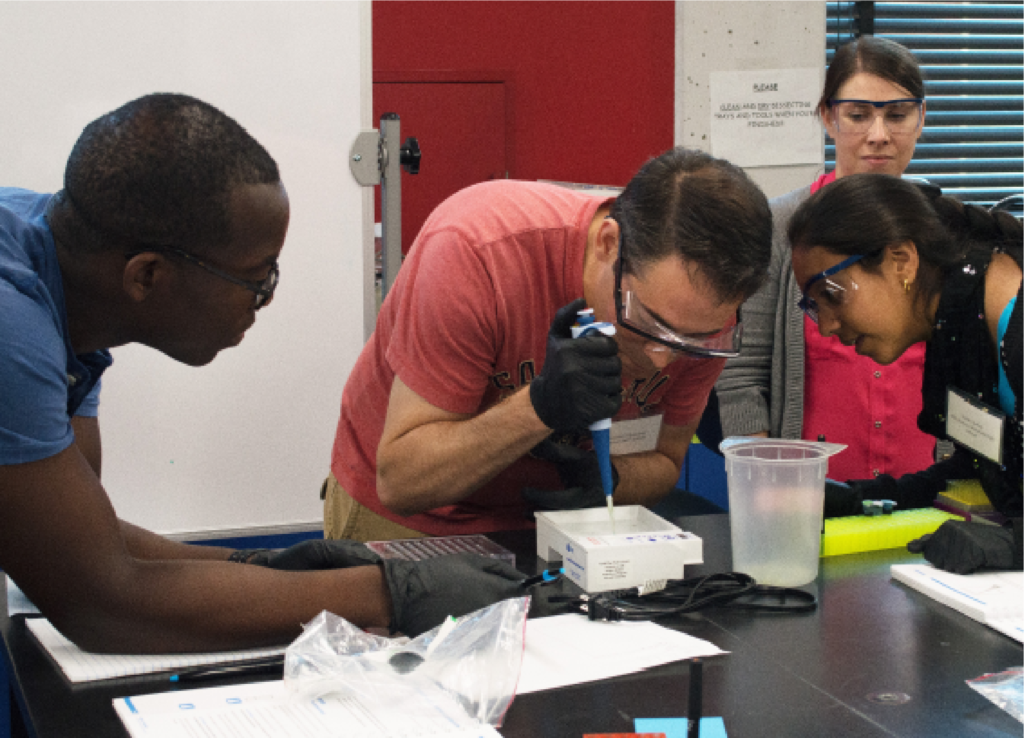
Bringing the LabXchange Identity to Life
Building an identity is a process. For many of us, it involves years of unconsciously adapting to the world in our own unique ways, then determining our behavior and preferences on our own terms. It takes paying attention to who we are as we grow up and who we want to be.
In the world of communications and marketing, developing a brand identity is like growing up—fast.
Instead of years, it’s just days. And it’s not just one person who gets to level up when they’re ready; the entire team must reach each checkpoint together.
Developing an Identity
This spring, the WE Communications team partnered with Harvard to help them create the brand identity behind LabXchange. WE is passionate about helping brands communicate and expand their purpose, so we jumped at the opportunity to help Harvard bring the personality of this exciting new platform to life and empower the next generation of scientists. To get there successfully, WE follows a creative process. It’s like our own scientific method. In the case of crafting LabXchange’s identity, here’s how it worked:
- Identify the question: Determine what’s needed
Starting with a clear direction is the first step in any successful project. The platform already had a name: LabXchange. And Harvard knew whom to tell about it: students, teachers, and researchers. So our first step was to ask, “What are we creating?”
The answer: Something that brings LabXchange to life. An identity that sets it apart as the innovative platform that it is. And that’s where WE came in.
- Research and investigate: Analyze the landscape
With our objective in hand, we needed creative direction. Beyond understanding the uses and audiences for LabXchange, we explored other learning platforms and how they connect with their users. WE also interviewed LabXchange faculty director Robert Lue and managing director Gaurav Vazirani to get a sense of their vision and what makes LabXchange unique.
- Build a hypothesis: Brainstorm visuals
Before we donned our creative hats, our strategists helped surface the most compelling themes from our landscape analysis. Anjelica Sloan, director of content strategy at WE, likened it to directing a movie.
“Delivering a good strategy is like giving a script to actors,” she said. “You have to be able to extract the information and get them to bring the core message to life.”
So with our script—and the mood we wanted to capture—in mind, we tapped into our right brains and had some fun. We explored a range of traditional to futuristic ideas, as well as options in between.
- Test your theory: Produce, review, refine, repeat
After our first brainstorm, WE developed several visual identity concepts for the LabXchange brand, which the logo would embody. Evoking the key attributes came naturally as we delved deeper into the creative process. For WE’s senior UX designer Bryan Kohl, it felt more like sculpting than directing.
“You start with an idea, but then the further you move through the process, the more the vision takes shape,” he said.
As we moved along in our process, the LabXchange identity emerged. It was:
- Modern: clean and appealing
- Authentic: focused on emulating hands-on scientific experiences
- Simple: easy to understand and approachable
- Communicate results: Deliver final
Looking at the final LabXchange identity, it makes sense. The logo and “fire and ice” color palette represent the scientific learning and collaborative elements that are core to LabXchange, while connecting back to the iconic Harvard brand. And for one seemingly small icon, it carries a lot of weight.
“A logo can be one of the hardest things because of what it represents,” Sloan said. “But at the same time, it’s so rewarding to work on. There’s a ‘foreverness’ to it—an understanding of just how permanent it is.”
For WE, communications grounded in purpose can be a powerful tool to connect the right minds to your brand. Developing the LabXchange identity was like merging creativity with the scientific process. It took a clear understanding of the long-term mission, an exploration of various concepts and ideas, and a commitment to detailed, thought-out steps—and it required taking those steps together.
.svg)

.svg)



